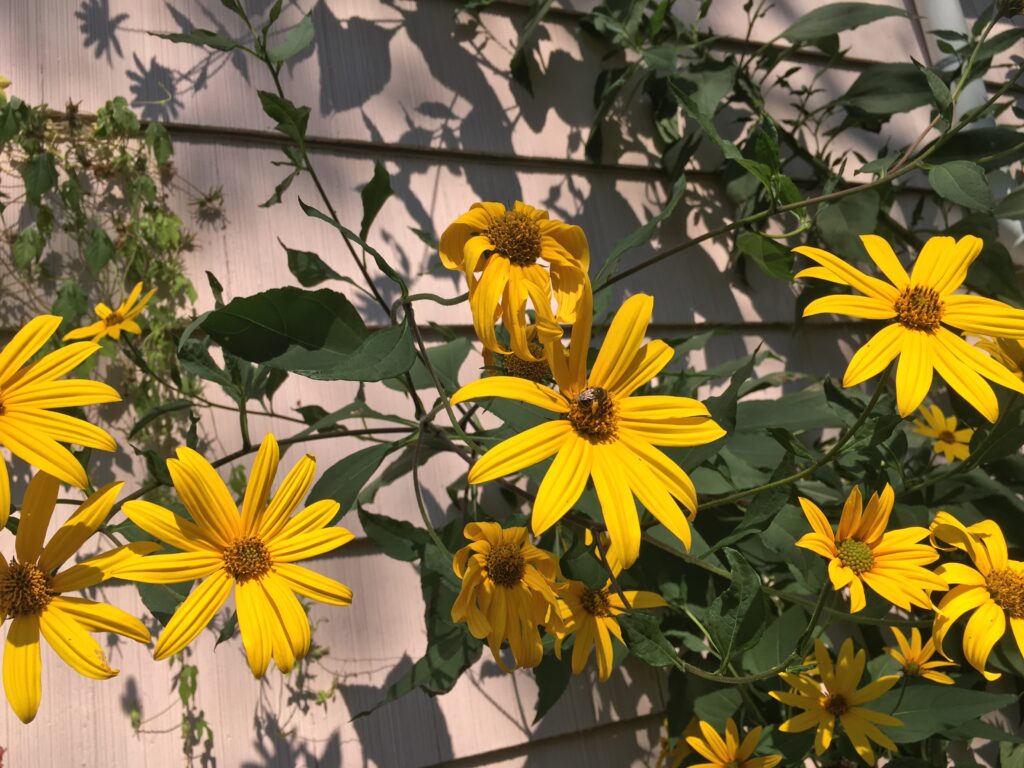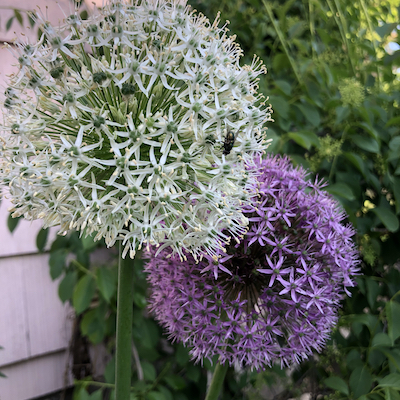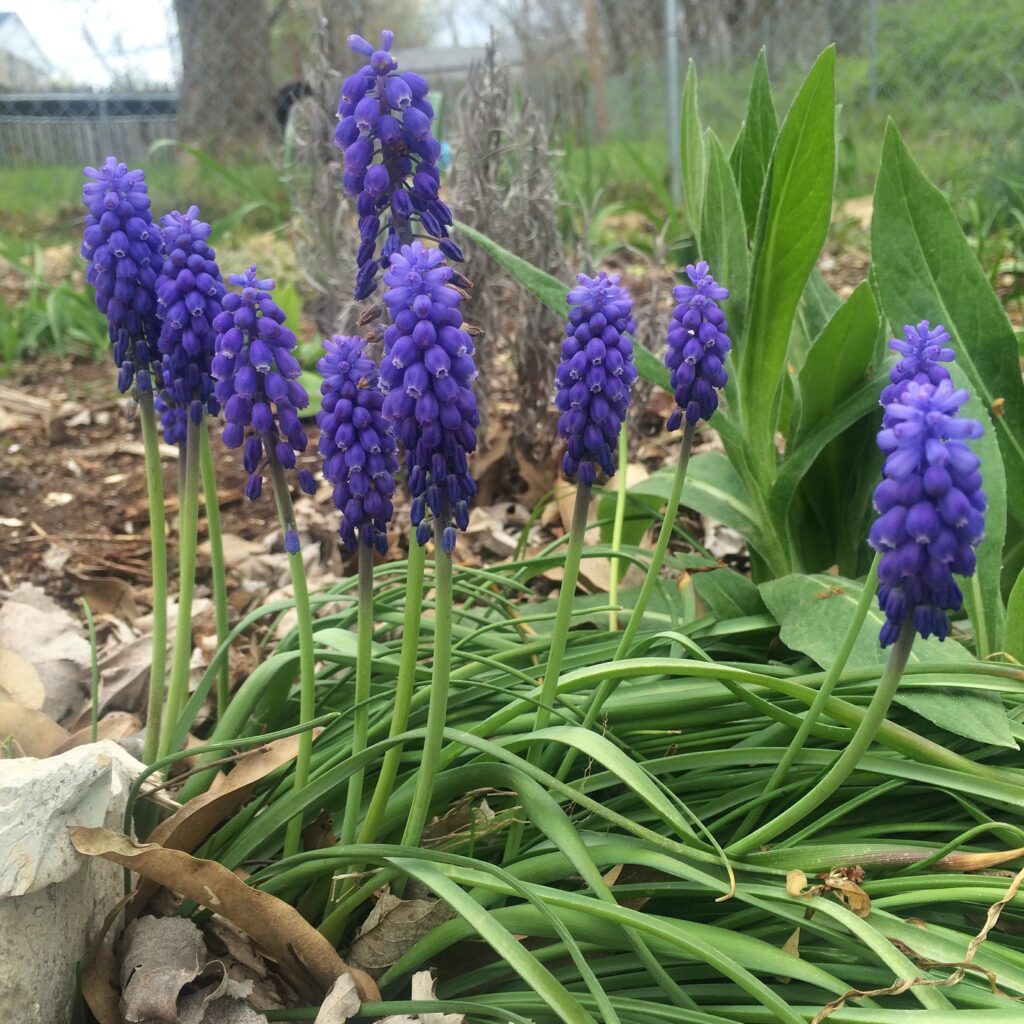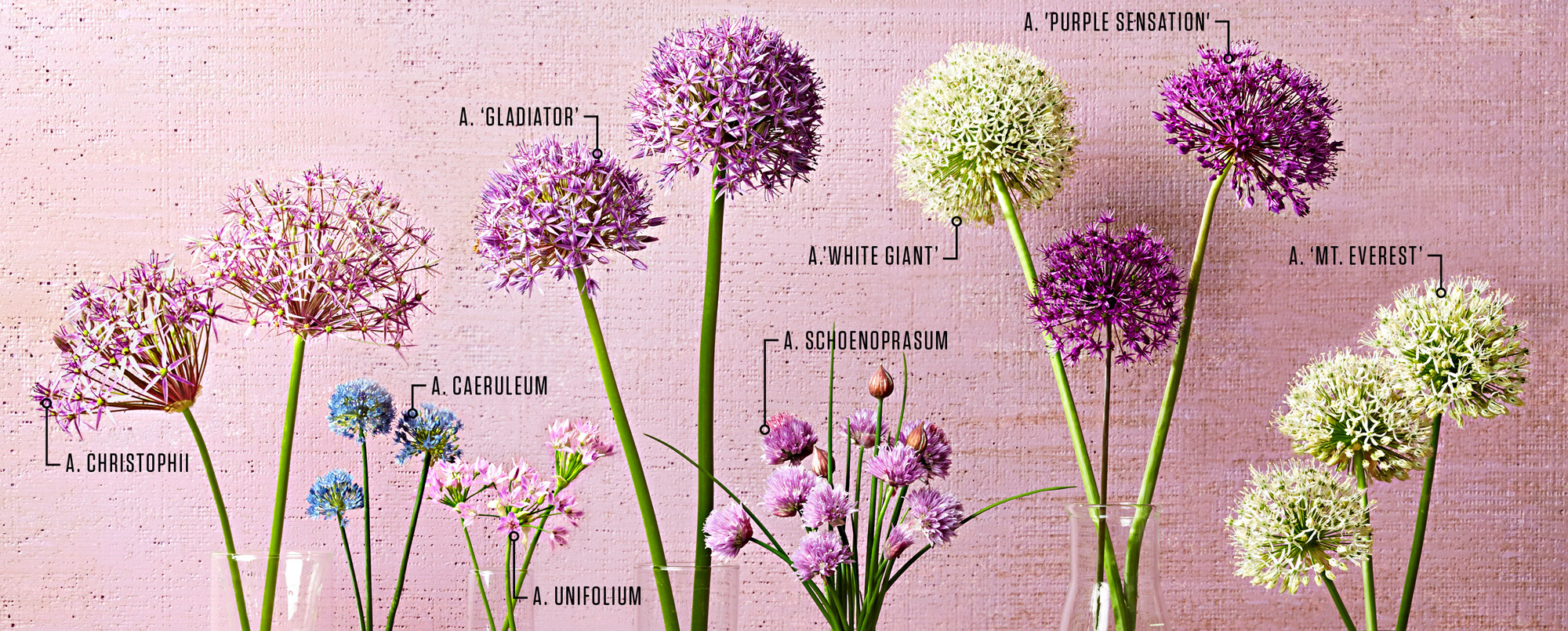In the midst of the winter hibernation, I find myself craving all things GREEN! I want to get outside and play in the dirt again, long for the warm sunshine, and can’t wait to smell the spring flowers. If you are like me, you have frequently googled, “What can you plant between snows?” …only to find very few answers. However, here are a couple of my favorites to help keep your heart hopeful in these long winter months.
Try sowing the following plants in your winter garden, so your yard is ready for springtime.
1 – Sunchokes (Jerusalem Artichokes)

Jerusalem artichokes are among the unsung heroes of the food forest garden. The tubers can be eaten like a potato and the fall plant will become 12′ tall with gorgeous yellow flowers. They need a lot of space and spread quickly, so do not plant them in the flower bed. Use them on the edge of the yard or as a full sun-border.
2 – Garlic

Garlic can be planted in the winter any time the soil can be worked. Plant twice the depth of the size of the clove, with the pointy end facing up. Cover with compost or straw when finished. They are best planted among the strawberries, because they form a beneficial relationship and help keep strawberry bugs away. Plant in full sun.
3 – Alliums

Alliums are among my absolute favorite spring flowers. Globemaster and Gigantium are possibly the most stunning garden perennials in my book and an excellent pollinator. Check out the banner on the top of the article for some other varieties. You can often find these bulbs on sale in early winter at local hardware stores. If you think you have bought enough, get two more (you’ll thank me later).
4 – Crocus & other spring bulbs

Most spring flowering bulbs can be planted until the end of January. Although they will not be as prolific as they may have been (had they been planted in November), they will still flower in the spring and flourish the following year. Crocus, narcissus, and muscari all do well in our area. These are all excellent sources of early color in the garden and great pollinators for bees emerging from their dormancy period.
5 – Comfrey

If you are a chicken, goat, or farm animal keeper – comfrey needs to be on your planting list. It is high in minerals and micronutrients, great for biomass creation, and used as a compost additive. Root cuttings are the most economic, and can be planted in the ground during the winter or indoors and transplanted in the early spring. Use the Bocking 14 variety to prevent seed spreading.
If you are looking for some more tips to satisfy your gardening itch in the winter, be sure to read through the December Gardening To-Do List. You can also sign up for our mailing list below for more FREE resources and information on upcoming events.

